Girasol Quartz, often known as Girasol Opal and Milky Quartz are a type of quartz that exhibits an opalescent sheen with a subtle glow or radiance that appears to move across its surface as it catches the light. This phenomenon, known as the “girasol effect,” is due to microscopic inclusions of water within the quartz. Chemically, it’s primarily composed of silicon dioxide (SiO₂), which is the fundamental component of all quartz varieties.

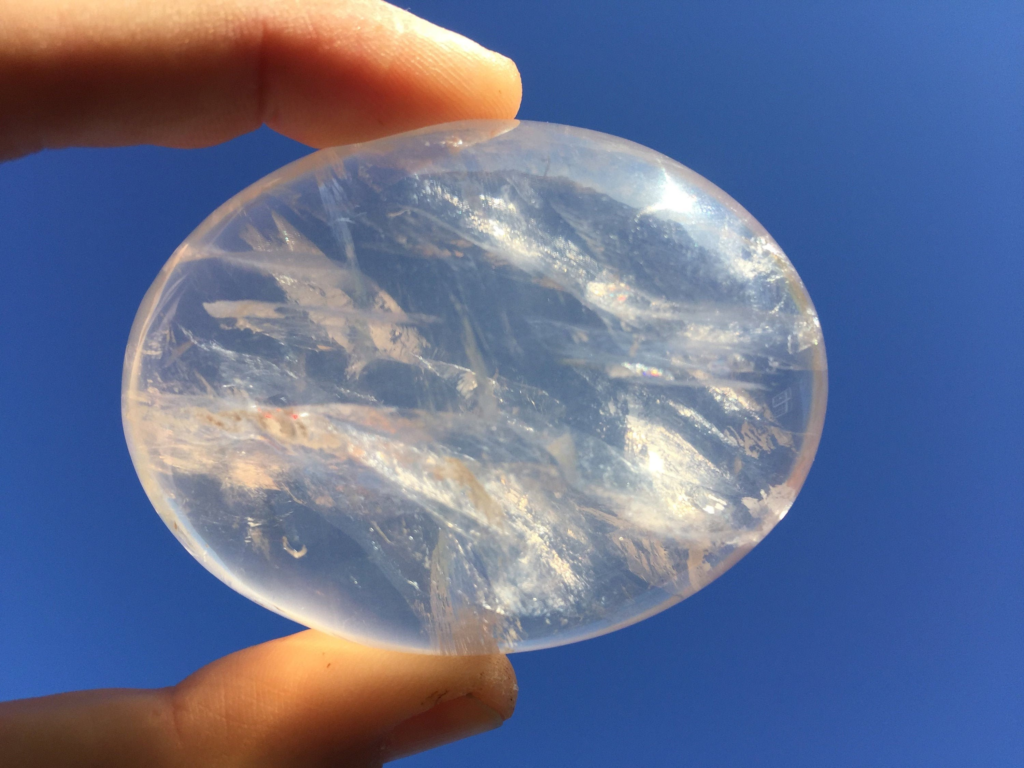
The translucence and milky appearance of Girasol Quartz come from additional mineral impurities and the aforementioned water inclusions. These characteristics give it a dreamy, slightly misty look that’s both subtle and visually appealing. Unlike other quartz types, Girasol Quartz typically does not have a crystalline structure visible to the naked eye, appearing more opaque and homogeneous.
Distinction from Other Types of Quartz: Girasol Quartz is set apart from other quartz varieties by its unique visual properties and internal structure. Here are a few distinctions:
- Optical Phenomena: The girasol effect, a type of adularescence, is a defining characteristic. This sheen is not as pronounced as the play of color in precious opals but gives the stone a soft, internal glow that seems to follow the light source.
- Translucency: Unlike clear quartz, which is typically transparent and has well-defined crystalline faces, Girasol Quartz is more opaque and does not display distinct crystal faces or points. Its milky, translucent appearance can sometimes be similar to that of frosted glass.
- Color and Appearance: It generally presents a color range from clear to milky white, sometimes with a blueish or golden tinge depending on the light and angle.
- Lack of Hardness Variation: While all quartz varieties share the same hardness level on the Mohs scale (around 7), Girasol Quartz often feels somewhat softer to the touch due to its less crystalline nature.
These distinguishing features help gem enthusiasts and mineralogists to identify and appreciate Girasol Quartz for its unique qualities within the broader family of quartz minerals.
Physical Properties of Girasol Quartz
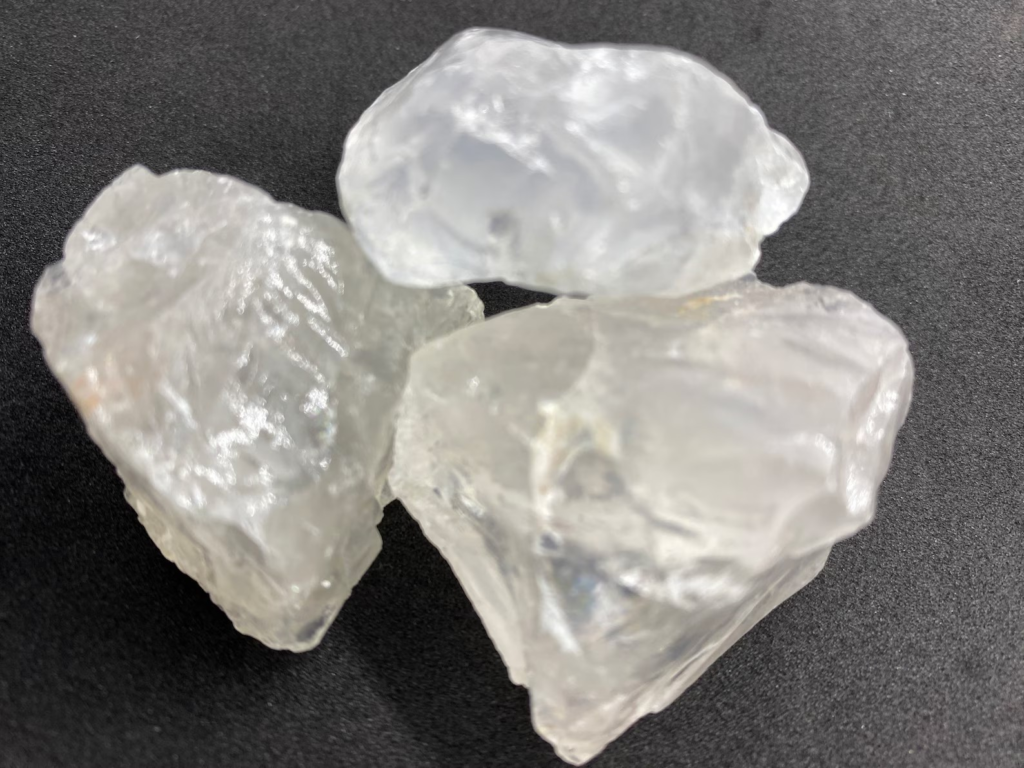
Color and Translucency: Girasol Quartz is recognized for its subtle color palette and translucency. The typical colors range from a clear, almost transparent look to a soft, milky white. Some stones may also exhibit a blue or golden hue, which enhances their appeal under various lighting conditions. The translucency of Girasol Quartz contributes to its ethereal appearance, with light diffusing softly through the material, giving it a delicate glow. This feature sets it apart from more transparent or opaque quartz varieties, adding a unique visual texture that is prized in jewelry and decorative items.
Crystal Structure and Formations: Unlike many quartz varieties that form clear, well-defined crystals, Girasol Quartz typically has a more amorphous structure, lacking visible crystal faces or sharp terminations. This is partly due to its formation conditions, where faster cooling rates and the presence of water inclusions disrupt the crystal growth, leading to a more glassy and less structured appearance. The crystal structure of Girasol Quartz is hexagonal, which is common to all quartz, but it often occurs in massive form rather than in well-defined crystals.
Common Locations Where Girasol Quartz is Found: Girasol Quartz is not as widely distributed as some other quartz types, but it can still be found in several notable locations around the world. Key sources include:
- Madagascar: Known for producing high-quality Girasol Quartz with excellent translucency and the characteristic girasol effect.
- Brazil: Another significant source, Brazilian Girasol Quartz is often found in larger formations and is popular in the gem trade for its quality and aesthetic properties.
- Mexico: Some varieties of Girasol Quartz are also mined in Mexico, where they are often associated with volcanic regions which provide the geological conditions necessary for this type of quartz to form.
These locations are renowned for their deposits of Girasol Quartz and contribute significantly to the global availability of this beautiful mineral. The distinct conditions in each location can result in variations in color, translucency, and internal features of the quartz, providing collectors and enthusiasts with a range of options to choose from.
Formation and Geology of Girasol Quartz
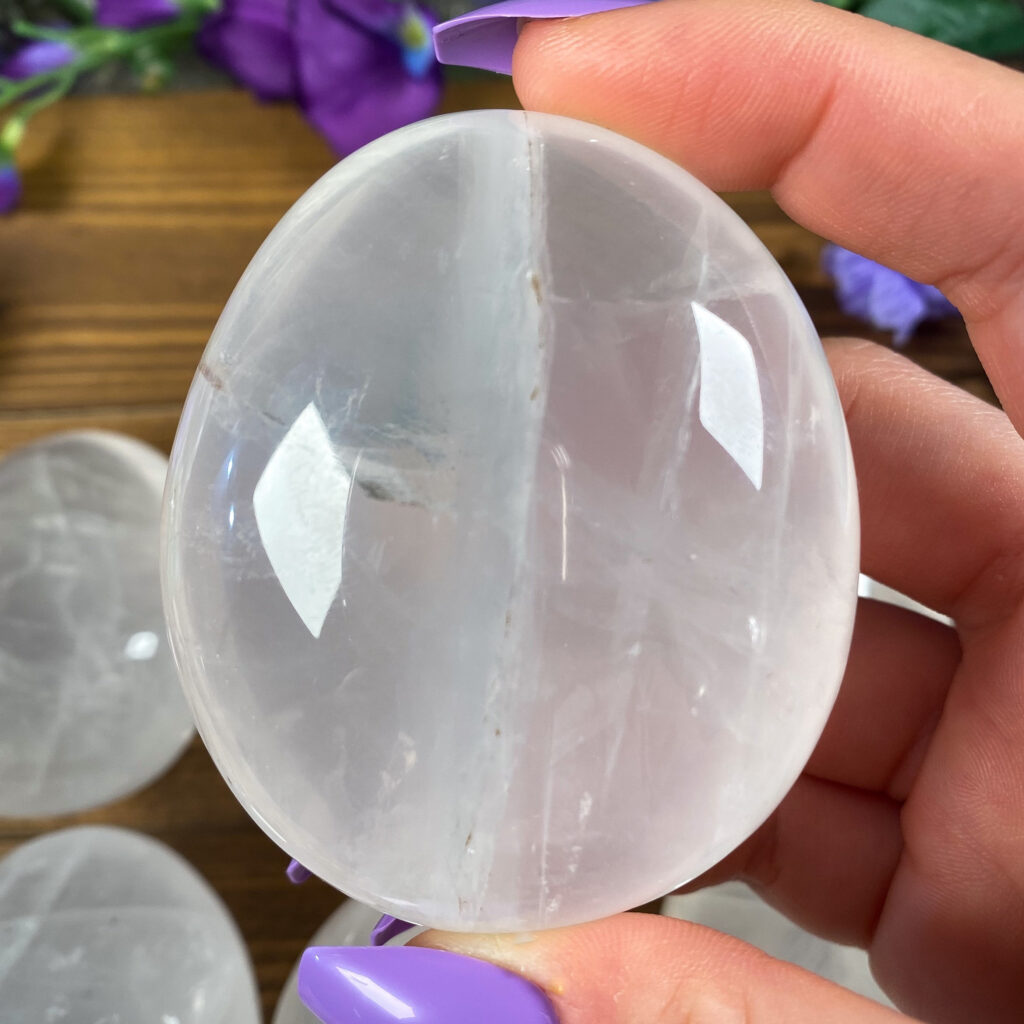
Geological Processes Leading to Its Formation: Girasol Quartz forms through similar geological processes as other types of quartz, with some unique conditions that contribute to its distinctive appearance and properties. The key steps in the formation of Girasol Quartz are:
- Silica-Rich Solutions: The initial phase involves silica-rich hydrothermal solutions, which are common in many quartz-forming environments. These solutions typically permeate through rock layers, filling cracks, voids, and cavities.
- Precipitation of Silica: As the temperature and pressure conditions change, silica begins to precipitate out of the solution. In the case of Girasol Quartz, the precipitation process is influenced by the presence of additional water content within the silica.
- Inclusion of Water: What distinguishes Girasol Quartz from clearer quartz varieties is the incorporation of microscopic water droplets within the silica matrix during its formation. These water inclusions are crucial in creating the “girasol effect,” which is the subtle play of light seen in the mineral.
- Cooling and Solidification: The final solidification process is slower, allowing the formation of fine-grained crystalline structures or amorphous masses rather than larger, clear crystals. This results in the milky, translucent appearance of Girasol Quartz.
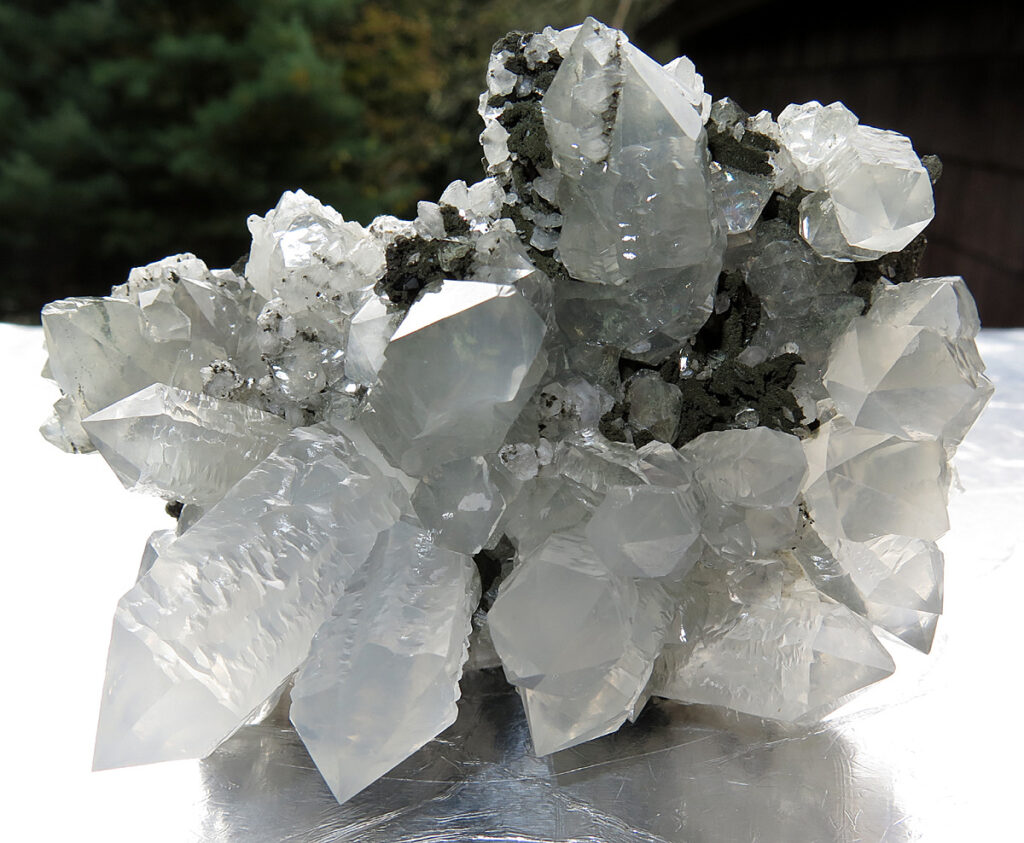
Typical Environments Where It Can Be Mined: Girasol Quartz is typically found in environments that can support the conditions necessary for its unique formation:
- Volcanic Regions: Areas with past or present volcanic activity are common sites for Girasol Quartz. The hydrothermal activity associated with volcanism provides the perfect conditions for the formation of this type of quartz, as silica-rich solutions are abundant and dynamic thermal gradients are present.
- Pegmatites: These are intrusive igneous rock formations that often contain large crystals and a variety of minerals. Girasol Quartz can form in pegmatites where fluid inclusion and rapid cooling occur.
- Alpine Clefts: High mountain ranges, where geological activity creates fissures and clefts, can also be fertile grounds for the formation of Girasol Quartz. These environments often experience the necessary pressure and temperature fluctuations that encourage the growth of quartz with water inclusions.
- Sedimentary Basins: Some Girasol Quartz deposits may be found in sedimentary environments where siliceous materials have been deposited and later transformed under low-grade metamorphism, incorporating water into their structure.
These typical environments are characterized by their ability to sustain hydrothermal systems and provide the conditions needed for the unique development of Girasol Quartz with its mesmerizing optical properties and milky translucence. Each mining location might yield quartz with slightly different characteristics, making each source unique in its contribution to the variety available on the market.
Uses and Applications of Girasol Quartz
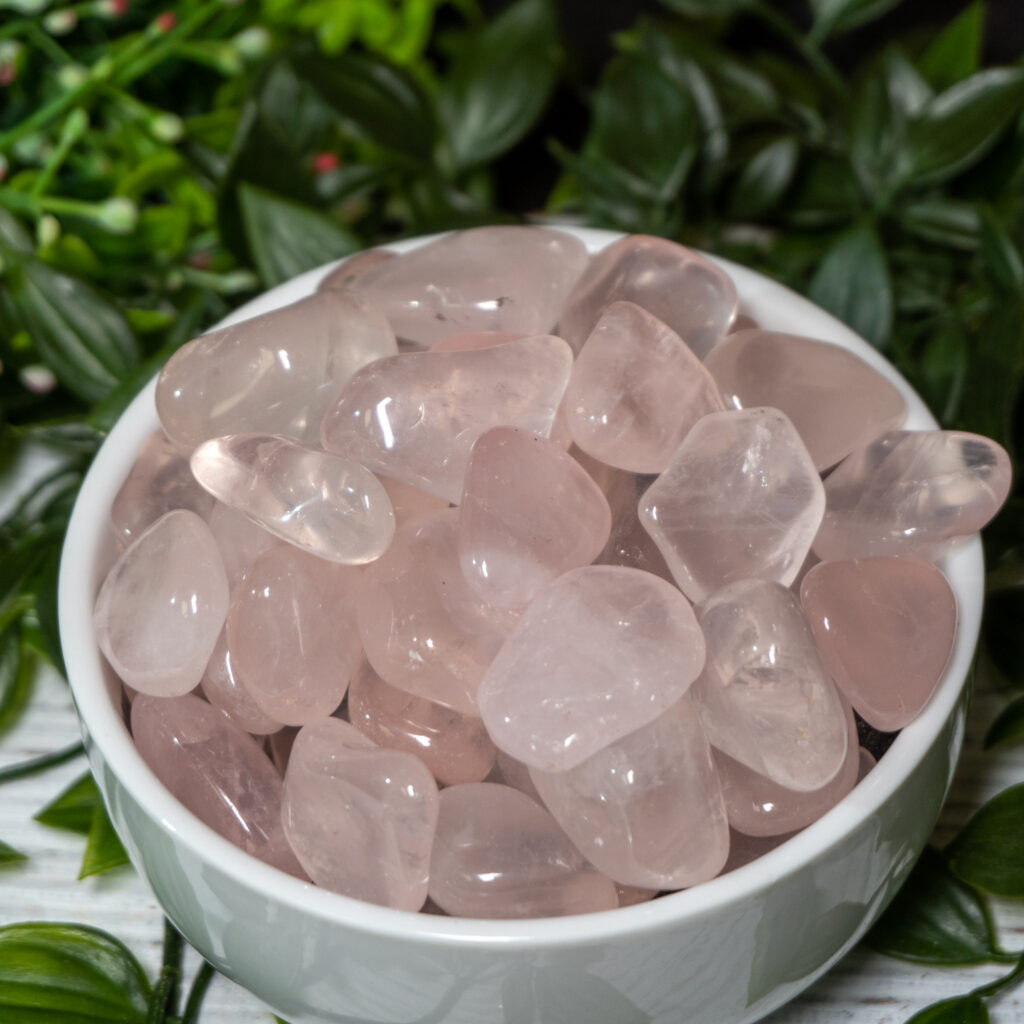
Girasol Quartz, with its distinctive glow and subtle beauty, finds its way into a variety of applications, ranging from jewelry and decorative items to metaphysical and healing practices. Here’s a breakdown of its primary uses:
1. Jewelry: Girasol Quartz is a popular choice for jewelry due to its gentle color and the mesmerizing girasol effect that adds depth and interest to pieces. It is commonly fashioned into beads, cabochons, and carvings that highlight its translucency and delicate color variations. The stone’s durability (with a hardness of 7 on the Mohs scale) also makes it suitable for everyday wear.
2. Decorative Objects: The milky, opalescent nature of Girasol Quartz lends itself well to decorative objects such as sculptures, figurines, and vase fillers. It is also used in the creation of ornamental bowls, spheres, and other polished items that serve as striking interior décor pieces, particularly in settings that utilize natural light to enhance the stone’s visual properties.
3. Healing and Metaphysical Use: In the realm of crystal healing and metaphysical practices, Girasol Quartz is valued for its purported calming and healing properties. Practitioners believe that it can enhance communication, foster emotional healing, and encourage feelings of peace and relaxation. It is often used in meditation, placed in healing grids, or carried as a talisman to promote inner tranquility and mental clarity.
4. Collecting: Mineral collectors appreciate Girasol Quartz for its unique characteristics. The stone’s appealing glow and the way its appearance changes with the light make it a sought-after addition to mineral collections. Collectors often look for specimens with particularly strong girasol effects or unusual shapes.
5. Architectural Features: Though less common, Girasol Quartz can be used in architectural features such as accent tiles, backsplashes, and other elements where its translucency and aesthetic appeal can be showcased under lighting. In such applications, it adds a touch of natural beauty and elegance to modern architecture and design.
6. Spiritual Practices: Some spiritual traditions use Girasol Quartz in rituals or as part of altars to enhance spiritual communication and to bring a sense of lightness and positivity to a space. It is believed to hold a connection to the moon and water elements, making it ideal for rituals that focus on emotions and intuition.
Through these diverse applications, Girasol Quartz not only beautifies spaces and personal adornments but also serves as a tool for personal and spiritual growth for many around the world. Its versatility and gentle energy make it a cherished stone in various fields.




































